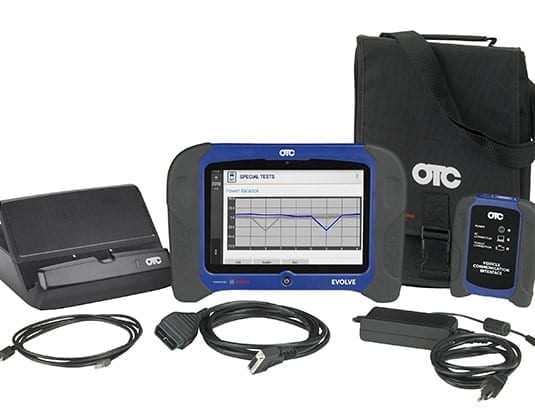Industry estimates indicate less than 10 percent of technicians are taking any kind of training updates once they leave trade school.
Several major aftermarket suppliers also provide components to OEMs, and as a result of this interaction, access to data is on average about 80 percent, with just a few key exceptions.
“The OEMs are never going to give us 100 percent of the information for the diagnostic scanners, but accessibility to the OEMs is about 80 percent, which is acceptable,” says David Hensby, Sales Development Specialist, NAPA Tools & Equipment.
“When I work with technicians with the scanning tools, the majority of the time they can do the job, except on those rare occasions when you get something that is very complicated. Most monitors you can turn off, and you can access data streaming, but there is still about 20 percent you can’t access.”
Data requirements
When it comes to aftermarket scan tools, there are limitations. “There isn’t one aftermarket scan tool that can do everything,” says Mark Lemay, Owner of Auto Aide Technical Services. “We licence this option of the manufacturer’s software, which will address 80 percent of the car. But if you have a problem with the other 20 percent you have to go to the dealer.”
Lemay says the workforce that we have to trouble-shoot the cars today is not skilled enough. “There are some skilled guys out there, but there are not enough of them,” he said.
Tech training
Donald Thibault, Senior Mechanical Trainer, Uni-Select, agrees with Lemay that adapting to the technology is the biggest problem for technicians. “Many technicians need training just to use the tools. Too many just give up and send them to the dealer,” explains Thibault.
To combat this problem, Uni-Select is introduced a training program for BMW that toured eastern Canada this fall. “We have two mobile units, and we took one on the road to all of our shops in eastern Canada. We have a BMW engine on the bench that is fully operational, so we can hook up a scan tool to it and do some work. We use the J-2534 interface to teach technicians how to access the information. We only train six technicians per session to ensure everyone gets the attention and the training they need to learn the system,” adds Thibault.
Duane “Doc” Watson, Field Sales Technical Trainer at Bosch Automotive Aftermarket, feels that the older generation of technicians often struggle with the new technology. “We still struggle with cell phones, but the younger technicians, they love them. It’s a learning curve that you just have to go through,” explains Watson.
The Android platform has made aftermarket diagnostics tools more favourable for the younger generation of technicians.
“Our Encore diagnostic scan tool offers different apps. If you go under the apps on that tool, there are additional tools that link through Bluetooth to that one scan tool. It’s a new standard or shift in the industry and Bosch is leading the way with that,” adds Watson.
“Five years ago, technicians had time to sit and look at a scanner; now they are so busy, they don’t have time to wait around. If it’s not on the screen in two minutes or less, they are getting frustrated at the lag time,” says Hensby. “With some scanners, there is a lot of information working in the background so the processor may work a bit slower. You could have a good scan tool, but techs aren’t interested in buying it because there is another one that doesn’t have all this information in the background, so it scans faster.
“Diagnostic scanning is a very complex industry, and it’s growing quickly. If you don’t understand it, it can be a difficult industry for you. When I do training, I see a lot of technicians that look like deer caught in the headlights,” adds Hensby.



